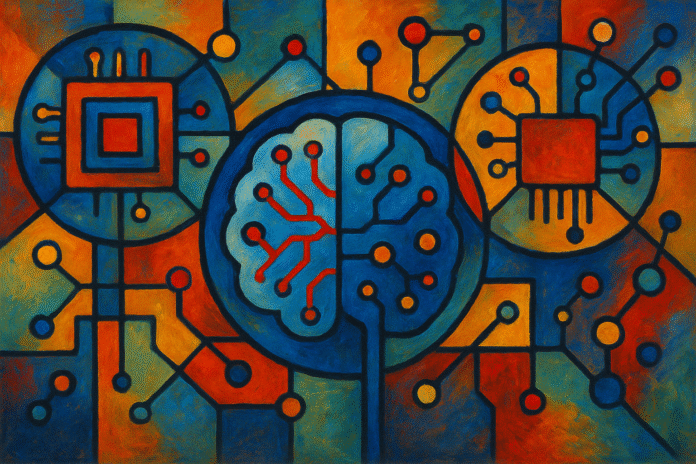Artificial intelligence has stopped being a laboratory experiment and has become an enabling technology for the pharmaceutical industry.
While early applications focused on drug discovery and predictive analysis of clinical data, today generative AI and large language models (LLMs) are redefining the entire value chain: from the search for new molecules to regulatory documentation, from pharmacovigilance to scientific communication.
Adoption is growing rapidly, but not without resistance. For many companies, the real barrier is no longer the technology itself, but the ability to integrate it in a compliant and sustainable way.
AI as an accelerator for R&D
In research and development, generative AI makes it possible to simulate thousands of molecular combinations in silico, drastically reducing screening time and cost. LLMs can read and connect millions of scientific papers, extracting patterns not immediately visible to the human eye.
Early evidence shows that this synergy allows companies to anticipate preclinical validation phases by months, improving overall success rates. But the impact goes beyond discovery: generative models are already being used to draft study protocols, safety reports and regulatory summaries in language aligned with authorities’ expectations.
The competitive advantage lies in the ability to turn knowledge into faster, better decision-making.
Manufacturing and quality: next-generation AI on the shop floor
Pharmaceutical manufacturing is also benefiting from the generative revolution. AI systems are used to analyze process data in real time, predict deviations and optimize the quality of the final product.
With LLMs, companies can correlate technical and regulatory information, automatically suggesting corrective and improvement actions based on production history.
The result is a new paradigm of intelligence-driven smart manufacturing, where documentation becomes dynamic and self-updating, and quality departments evolve into predictive analytics hubs.
The regulatory frontier
The most sensitive point remains alignment with regulators. The European Medicines Agency and the European Commission are defining guidelines on the use of artificial intelligence across the medicinal product lifecycle, especially in regulatory processes and pharmacovigilance.
Transparency, traceability and human oversight are the three guiding principles.
The risk of “AI black boxes” — algorithms that generate non-explainable results — is currently the main barrier to large-scale adoption. Authorities are requiring auditable systems, validated datasets and structured governance frameworks able to guarantee data quality and the integrity of outputs
Governance e responsabilità dei dati
L’AI generativa amplifica il valore ma anche la vulnerabilità dei dati. Ogni fase, dalla ricerca al post-marketing, produce enormi quantità di informazioni cliniche, genetiche e produttive che devono essere gestite in conformità con GDPR, GxP e normative etiche.
Le aziende stanno quindi sviluppando framework di governance integrata che bilanciano innovazione e compliance.
Le funzioni IT e qualità devono dialogare costantemente, costruendo infrastrutture che consentano di tracciare ogni decisione presa da un algoritmo e di verificarne l’impatto. In assenza di una cultura del dato, l’intelligenza artificiale rischia di trasformarsi da leva strategica a fattore di rischio reputazionale.
Data governance and accountability
Generative AI amplifies both the value and the vulnerability of data. Every phase, from research to post-marketing, produces vast amounts of clinical, genetic and manufacturing information that must be managed in accordance with GDPR, GxP and ethical standards.
Companies are therefore developing integrated data-governance frameworks that balance innovation with compliance.
IT and quality functions must work together, building infrastructures that allow every AI-enabled decision to be traced and its impact verified. Without a strong data culture, artificial intelligence risks shifting from a strategic lever to a reputational liability.
Impact on capabilities and leadership
The introduction of generative AI is reshaping required professional profiles. New hybrid roles are emerging — regulatory data scientists, AI compliance managers, prompt engineers for technical documentation — working at the intersection of technology and pharmaceutical science.
For executives, the challenge is twofold: understanding AI well enough to guide its integration, and creating trusted ecosystems where technology does not replace experts but amplifies their judgment.
Future competitive advantage will depend less on the algorithm itself and more on the quality of the decisions the algorithm helps enable.
From the lab to the boardroom
Generative AI is no longer an IT project but a strategic business decision. Companies adopting it are revising governance models, risk management practices and relationships with technology partners.
Early experiences show that the most significant benefits arise when AI is integrated from the start into the innovation cycle: research, manufacturing, compliance and communication.
This requires long-term vision and sustained investment, but allows organizations to turn accumulated knowledge into scalable competitive value.
Beyond technology: trust as the real enabler
At the heart of every successful digital transformation in pharma lies trust — trust in data, in algorithms and in the people who govern them.
Generative AI can accelerate the discovery of new treatments and improve the efficiency of the value chain, but only if embedded within a framework of ethics, transparency and shared responsibility.
The future of the sector will not depend on how sophisticated machines become, but on how intelligently we choose to use them.


